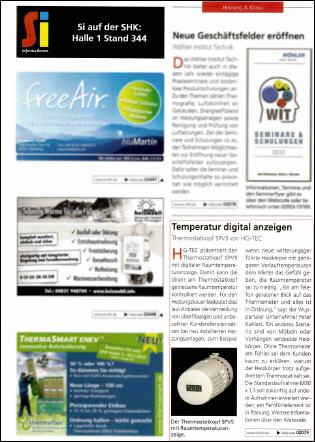ENERGY & COST ASPECTS
In addition to code-dependent standard interior temperature, thermal comfort is the important factor in determining room temperature.
Living rooms and bedrooms as well as kitchens and lavatories should be kept at 20°C; bathrooms at 24°C and anterooms and corridors at 15°C.
Business working spaces should be kept at 20°C and school rooms at 20°C.
The thermal comfort deviates somewhat but also lies on average in this range, e.g. living room 20°C - 21°C and is perceived individually.
If you look at the parameter of 20°C in the living room, it is discovered that as a rule, much higher temperatures are set in the room. This can be explained by other heat sources (TV, lights, etc.) but also by the habitual perception. In the latter case, the thermostat head is always set somewhat higher and undesired and unnoticed temperatures are reached which are significantly higher. This is first noticed when others enter the room or you come back into the room.
A 1° increase in room heat requires approx. 6 % more energy.
You can see the portion of energy expenditure needed for the room heating on the adjacent diagram. Approx. 74%-76% energy is used for room heating:
According to the Federal Statistical Office (DStati 2010), approx. 130 Euros/ month are used for residential energy. Of this, approx. 74% is included for residential room heating. This results in a statistical monthly average of 96 Euros.
So on average, 96 Euros per month are used for residential room heating. Furthermore, theoretically there is an up to 30% energy-savings potential with properly controlled room heating meaning 28 Euros / month can be saved.
These figures are understandable and depending on the user habits, differently applicable.
Amortisation (calculated) can result after only 2-3 months.
Please check this information and your own personal needs. The SPV 5 is a tool and can make this or even better values possible.

Press response
 |
 |
(C) 2011 - Alle Rechte vorbehalten